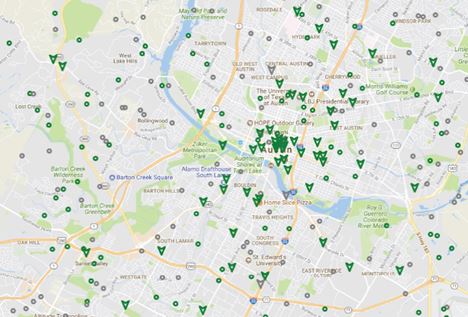By Glynn Cosker
Managing Editor, EDM Digest
One of the biggest obstacles facing emergency response teams – as well as the general public – is the huge amount of information that is distributed during a natural disaster. The Disaster IQ app, developed by a group of Texas A&M University students and their professor, sets out to streamline all of the information while also educating communities with a resilience strategy during emergencies like last year’s devastating Hurricane Harvey and this month’s Hurricane Florence.
Disaster IQ App: SeeIt, TweetIt, MapIt

Disaster IQ – currently in the trial stage – was designed for the rapid dissemination of critical information – a vital component of any emergency management plan. Disaster relief organizations can utilize the data garnered by Disaster IQ to deal with the inevitable challenges during and after national disasters. According to the Texas A&M Engineering Experiment Station (TEES), Disaster IQ has three main components: “SeeIt,” “TweetIt” and “MapIt.” Each component helps to distribute information through “analytical data gathering, resident self-reporting and disaster scenario education.”
“The idea going forward is that we’ll consolidate all of these practices into a single app,” said Abo Deeb, one of the students who worked on the project and a recent Texas A&M graduate. “‘TweetIt’ takes data from tweets and puts the incident, maybe a power outage, on a digital map to provide information to emergency responders. We also have ‘MapIt’ so that a user can manually put an incident on a map and report it, and we have ‘SeeIt,’ which [has] educational videos that teach people to be smarter citizens, how to see warning signs, and how to use the software to help themselves.”
“One of the challenges is how we collect information from these tweets,” said Texas A&M computer science engineering student Michael Peterson. “I’m working on clustering tweets, which involves taking tweets that are all happening in the same area to create reliable information on what is happening.” Peterson’s primary goal is to create an interactive map from the thousands of tweets.”
The team demonstrated their Disaster IQ app prototype at the Texas A&M Engineering Project Showcase on April 27.
Disaster IQ – Deployed During Hurricane Harvey
Dr. Ali Mostafavi, Design IQ’s project faculty adviser and Texas A&M assistant professor told U.S. News and World Report “when the project started in August [2017], of course we had no clue that Hurricane Harvey would strike, offering an opportunity to deploy it almost immediately.” Hurricane Harvey, which struck Texas in late August 2017, caused catastrophic and devastating rainfall-triggered flooding in Houston and its suburbs. Harvey is tied with Hurricane Katrina as the costliest hurricane-related disaster and caused $125 billion in damage; it also resulted in the deaths of more than 100 people.
The Role of ‘Influencers’ and Information Distribution
Dr. Mostafavi and his team found that social media played a significant role in supplying data during and after a natural disaster. For example, someone might seek water levels during an 
“The next phase is scaling the technology,” Dr. Mostafavi said. “This system is a prototype in terms of the amount of data we’re currently able to process, which is a body of about 100,000 tweets. During Harvey, we had 23 million tweets alone that conveyed some type of disaster information, so we want to build a capacity in the system that hits millions and billions and is able to analyze that data.”
Dr. Mostafavi’s goal is to release a finalized version of the Disaster IQ app to help local municipalities promote an improved disaster response. The team hopes to integrate other social media platforms into the system. “Our goal is to deliver a tool to improve the lives of people during these extreme events and to transform this into a product for users,” stated Dr. Mostafavi. “I think the students are making great strides in doing that, and we are excited to see it go further.”
Comments are closed.